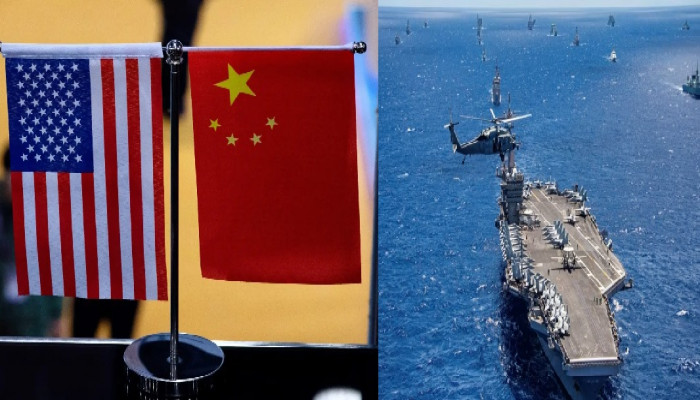U.S. Navy unveils 'Project 33' to counter China's growing threat in Indo-Pacific
- In Reports
- 12:07 PM, Oct 01, 2024
- Myind Staff
In an effort to mitigate China’s power over Indo-Pacific region the U.S. Navy has launched "Project 33," an all-encompassing plan which basically aims to curtail China’s increasing military aggression in the Indo-Pacific region. The strategy came as a response to the report published by Taiwan News, which indicates a possible Chinese invasion of Taiwan by 2027, according to a report from Taiwan News.
Inducting modern technologies, robotics and autonomous system to strengthen Navy’s modern capabilities is the crux of Project 33. The project outlines seven key objectives. These include addressing delays in the maintenance of ships, submarines, and aircraft, expanding the use of robotic systems to rapidly integrate new platforms, and setting up command centres suited for distributed battlefield operations. Other goals involve improving recruitment and retention of top talent, enhancing combat training, and upgrading critical infrastructure to support shore-based operations.
On September 18, Admiral Lisa Franchetti, the Chief of Naval Operations, released the "Navigation Plan for America's Warfighting Navy 2024." This strategic document introduces "Project 33," which aims to enhance U.S. military readiness in the Western Pacific by integrating advanced artificial intelligence (AI) and human intelligence. The project is designed to ensure military superiority, particularly in light of rising tensions in the Taiwan Strait.
Rather than expanding the size of its fleet, the U.S. Navy is focusing on maximising efficiency through cutting-edge technologies like drones and unmanned systems. Admiral Franchetti noted that this strategic shift is driven by anticipated financial and industrial limitations, making it unlikely that the Navy will grow significantly by 2027. Instead, the Navy aims to optimise its current resources to stay ahead in the evolving maritime landscape.
Admiral Franchetti highlighted the lessons learned from recent conflicts, such as the Russia-Ukraine War and the Red Sea Crisis. Ukraine’s use of anti-ship missiles and drones successfully challenged Russia’s Black Sea fleet, while in the Red Sea, Houthi forces used ballistic and cruise missiles alongside drones in large-scale attacks on U.S. forces. These conflicts demonstrated the importance of robotic platforms and affordable munitions to create "asymmetric sea denial."To adapt to these lessons, the U.S. Navy has introduced a new Robotics Warfare Specialist role and is integrating robotic and autonomous systems across its numbered fleets.
The Navy is also experimenting on advanced counter-drone technologies, including directed energy weapons.
While speaking at an event at the Centre for Strategic and International Studies (CSIS) in Washington, Admiral Franchetti acknowledged that although the U.S. Navy may need to grow in the future, a significant expansion by 2027 is unlikely. Instead, the focus will be on making the most of existing resources and improving operational efficiency.
Moreover, as China never fails to project its military superiority over Taiwan region; now the US is giving a proper response by augmenting its naval presence over the region to ensure that Taiwan has got US’s back for its defence.







Comments